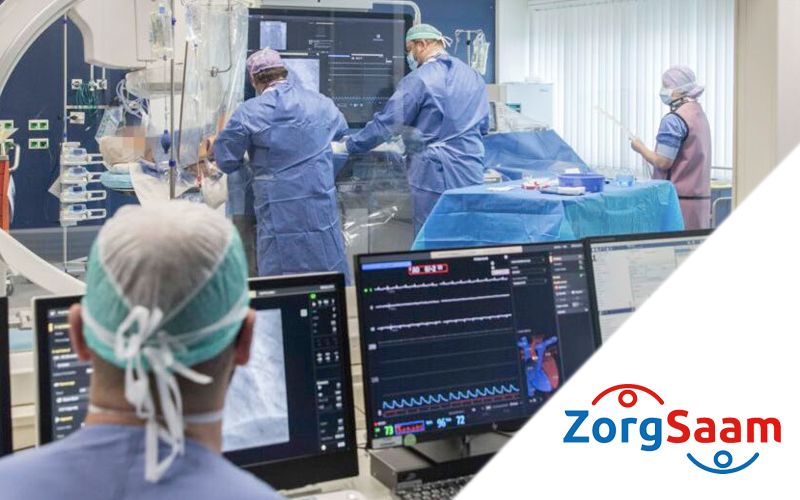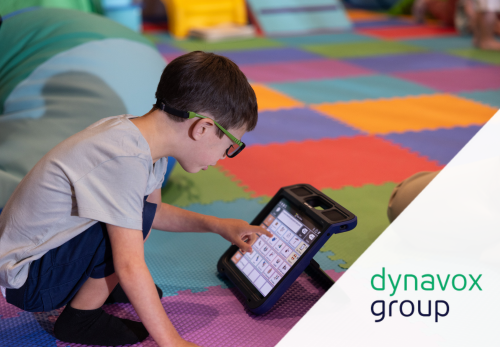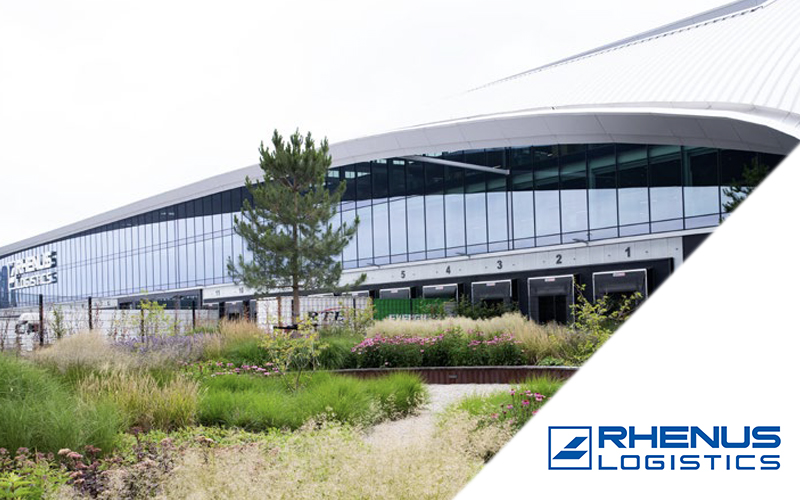
How does a data integration tool contribute to better healthcare, improved patient experiences, and more efficient healthcare work? For ZorgSaam, E-mergo – in collaboration with Rapid Circle - built a powerful data ecosystem that forms the foundation for groundbreaking healthcare innovations. With this platform based on TimeXtender, ZorgSaam can work on data-driven decision-making, user-friendly access to information, and other data applications for future-proof healthcare without technical barriers.
ZorgSaam Zorggroep Zeeuws-Vlaanderen provides high quality care to the local community in a region with unique healthcare challenges. A large number of locations are required to ensure that healthcare is accessible to everyone. However, the region is sparsely populated, which means that the locations do not have a sufficient number of patients and clients. As a result, ZorgSaam not only provides hospital care, but also community care and care for the elderly. The mentality of the organisation is therefore one of cooperation and clever combinations.
Zeeland is also suffering from an ageing population compared to the rest of the Netherlands. Both the population and the workforce in the health care sector in this region are relatively old. As a result, the need for care is high, while the number of health care workers is on the decline rather than on the increase. As a result, there has to be a change in the way care is provided. ZorgSaam is already advanced in its ability to make clever combinations between different types of care. But this needs to be more intensive and innovative. Healthcare workers will have to work in a data-driven way, and patients will receive more care at home, supported by digital technology. In order to achieve all this, innovation and the exchange of data will be necessary.
Do not exchange. Share.
Peter van den Berg, CIO of ZorgSaam: "When the minister talks about exchanging data, it makes my hair stand on end. Simply make the data available on your platform when it's required. And that is the philosophy we follow at ZorgSaam: every employee, every specialist, but also every patient must have access to the data they need to make the right decisions and show the right behaviour.
In addition, data is only part of the story, according to Van Den Berg: "You shouldn't just be data-centric, you should also be user-centric. That's the flip side. After all, what do you want as a health care institution? A healthy population. That won't happen if you just focus on data. How are you going to bring that data to the people? How can they use it for self-education, for better monitoring of their own health? To do that you need to provide user-friendly access to the data. But, of course, that can only happen if you have good data."
Data can help to dramatically improve the patient experience, for example by assisting the doctor during consultations. Van den Berg: "If someone comes to the specialist nervously, you have to deal with them in a different way than if you're telling someone that they can go home or that they're healthy. That's not something we're very good at in healthcare. We look at symptoms, make a diagnosis and prescribe a treatment. With data, you have the opportunity to look at the whole picture, where the system looks at averages and says: these are the diagnoses that could have been made based on the data. The doctor and nurse can then ask: is this true for this person? Or is there something else that is going on? This is a straightforward, but for the health sector, progressive view on data. It even seems that Zeeland, forced by circumstances, is out-innovating the rest of the country." Van den Berg laughs: "We're doing our best."
We basically built something that already existed. But now we can do a much better job of managing the data pipeline, from the source to the visibility in the dashboards. And, most important, we can now add new use cases very quickly. [...]'
Michel Provoost - Data Team Leader
A data platform for healthcare innovation
In order to realise ZorgSaam's vision, the data first had to be liberated from the source systems. To do this, the organisation developed a data strategy. And it was this strategy that attracted data specialist Michel Provoost to become the leader of the the Data Ops team at ZorgSaam in 2022. Provoost joined the team when ZorgSaam, Rapid Circle and E-mergo were ready to operationalise this data strategy. E-mergo was on board because the project was in need of specific data expertise and tools. Their experience with TimeXtender played a key role in the project plan; the use of TimeXtender as a tool would ensure that this would not become a long and risky IT project. Michel: "ZorgSaam wanted to move quickly and innovate step by step, and there was no support within the organisation for long, complex projects. With TimeXtender, we would be able to connect data sources very quickly in a low-code environment and make the data available for immediate use".
Tackling healthcare challenges
An initial pilot with TimeXtender was primarily to prove to the rest of the organisation that the project had great potential. Once this had been demonstrated, the team moved on to building the data platform. The data platform was unique in that it was the first time that TimeXtender was used to exchange data with Chipsoft HiX. To facilitate a wide range of use cases, operational data was combined with financial data. In addition, Provoost's team was trained on the data tool. They were so enthusiastic that the first use case was operational within a few months. The focus was purely on operational use cases: ways to make data immediately useful for care giving. It was not about strategic information provision, BI or finance. Those are important, but the real challenges are in the provision of care itself.
Learning together
"Working together went very well," says Provoost. "I am more of an informal type. I'm not a fan of rules and procedures. You can spend years on theory, but I just want to get the job done. I have found the same attitude at Rapid and E-mergo. Like me, they don't want to be constrained by thinking about what can't be done. Because there aren't many things that can't be done any more. You just have to take small steps and not start all kinds of big projects. With such a practical mindset, we were able to start a learning process together".
Better processes, data-driven governance and performance management
The first use case was a new 'Integrated Capacity Planning': a set of dashboards for bed and operating theatre occupancy. These dashboards replaced an older system that did the same thing. "In fact, the first thing we did was build something that was already there," says Provoost. "But now we can manage the data pipeline much better, from source to visibility in the dashboards. And, most important, we can now add new use cases very quickly. What we are doing now for the beds and the operating theatres, we can do for the clinics as well. It's no longer a technical problem."
Thanks to these dashboards, ZorgSaam has an overview of bed occupancy, admissions and discharges - and is thus aware of any capacity problems in a department. The dashboards also support performance management: by showing which processes are working well and where they need to be improved, the dashboards reduce the workload of caregivers.
Better information, better care
There has also been an improvement in care and patient outcomes. A second use case was for a surgeon who is a specialist in the treatment of breast cancer patients. "Her patients fill out questionnaires on a regular basis," explains Provoost. "But it's difficult to view multiple questionnaires side-by-side in HiX, our EHR. We retrieve this data from HiX with TimeXtender and do visualisations with Power BI. We then send these visualisations back to the HiX system. In this way, the surgeon has a visual representation of the answers at different points in time in the patient's record. One of the questions is 'Are you in a lot of pain?' If you see the score going down on that question, you know it's going well. In this way, a doctor can have a more efficient discussion with the patient. Without paperwork, without excel, without handwork.Doctors talk among themselves about these applications. So the organisation is also learning to work more data-driven. As a result, other doctors are asking Provoost if it is possible to do the same thing with their questionnaires. And it can be done. All thanks to the data platform.
Prepared for Wegiz, vendor agnostic
With all data available and usable on a secure platform, ZorgSaam is ready for future trends. Like the arrival of Wegiz, the Healthcare Data Exchange Act. The platform also means that they are less dependent on their suppliers for the functionality of the data. Provoost: "Our approach is to take care of ourselves. That's because HiX, Nedap and AFAS each have their own roadmaps, which are not necessarily in line with what we want."
The ZorgSaam way forward
Unlocking data from a healthcare organisation's core systems is no easy task - especially when security, privacy and compliance are top priorities. However, ZorgSaam is now well advanced in this area and is able to respond quickly to the organisation's requests for information. The next step is to develop new quality dashboards. "We used to do this ourselves, without the support of E-mergo," says Provoost. "We exported data from HiX to Excel with the help of a report generator and combined it with data from other source systems such as Zenya. This allowed us to report on a monthly basis. We're now going to house this in TimeXtender so that we can update the data at any time and give the dashboards a more real-time character", he says.
Other future opportunities on ZorgSaam's agenda include predicting bed occupancy using AI from Azure, using RPA to reduce administrative burden, and improving regional collaboration by connecting the data platform to data platforms of other healthcare institutions.
“The collaboration went very well. I'm an informal type. I don't like rules and procedures. You can spend years on theory, but I just want to get the job done. I found that attitude at Rapid and E-mergo too. Like me, they don't want to be limited by thoughts about what can't be done. [...]”
Michel Provoost - Team Leader Data Ops team
Solution Overview
Industry: Nursing care
Challenges: Data-driven working in healthcare
Solution: TimeXtender
Benefits
- Working with data became intuitive
- The 'Excel landscape' is disappearing
- Secure and controlled data exchange with external organisations is now much easier
About E-mergo
The name E-mergo comes from the Latin proverb 'luctor et emergo' (I struggle and emerge). In Zeeland, this stands for overcoming the struggle against the water. Of course, we do not fight against the water, but we do ensure that companies can keep their heads above water in the ever-growing stream of data. Under the motto 'Manage your data, innovate your business,' we help you get the most out of your data. We do this with the help of Qlik, Mendix, Microsoft, and TimeXtender, for which we provide software, training, consultancy, and management. Together, we enable your business to create new revenue models and save costs.
E-mergo www.e-mergo.nl

 TimeXtender
TimeXtender


